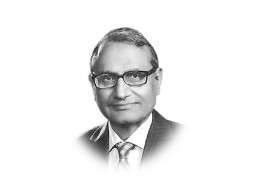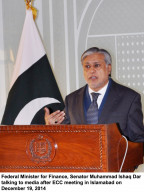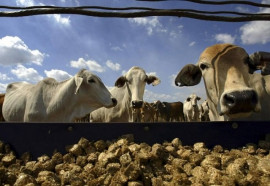
CHICAGO: No matter which way one cuts the data, the results are undeniable: over the past six years, the Pakistani rupee appears to have become more stable compared to its historical levels of volatility.
Is this simply an anomaly in the overall pattern of instability or is the rupee truly becoming a more stable currency. A look at the data suggests that government policy, specifically towards remittances, may be driving this trend towards stability.
In early 2009, the finance ministry, in conjunction with the State Bank of Pakistan, launched the Pakistan Remittance Initiative (PRI), which can fairly be described as one of the most successful and well-designed policy measures taken by the government.

Before the PRI, the government faced a huge problem: there were six million Pakistanis living outside the country, mostly in countries like the Gulf Arab states where they earned higher wages than in Pakistan and sent money back to their families, to the tune of several billion dollars a year.
However, hardly any of that money came through formal banking channels, with most of it coming in the form of informal money transfers made through networks that were undocumented and, in some cases, illegal.
As a result of this undocumented activity, the remittances were not captured in official data or through official channels, resulting in their positive impact on Pakistan’s balance of payments – and thus the exchange rate – to be indiscernible. The PRI was designed to change that, not by trying to conduct yet another failed crackdown on the illegal money transfer networks, but instead by competing with them on price.
The attraction of hundi or hawala networks was that they provided good exchange rates, low transaction costs, and no questions about source of income or taxation. The PRI effectively introduced all of those elements into the formal financial sector, with the government paying the difference between what the banks and formal money transfer companies would have charged consumers and the new lower prices.
This initiative is not cheap. It costs the government close to $100 million a year, but it has also increased formal remittances to Pakistan to $17 billion a year, growing at an annual rate of 15.9% per year since 2009, a pace virtually unprecedented in Pakistani history. And it also appears to have had the added benefit of causing the rupee to depreciate far more slowly than its average historical rate.
According to data from the State Bank of Pakistan, between 1981 and 2008, the Pakistani rupee depreciated against the US dollar at a rate of 8% per year. In the six calendar years since the PRI was introduced in early 2009, the rupee has depreciated by only 4.1% per year, nearly half of its historical average.

There is not yet enough data to do a complete analysis on whether or not it was the PRI that caused the rupee to stabilise relative to its historical volatility levels, but these early indications are a relatively positive sign.
It is now cheaper to remit money to Pakistan than to any other country in the world. According to the World Bank’s data, three out of the five cheapest corridors to send money in terms of transaction costs all terminate in Pakistan, suggesting that the PRI has been successful in its objective of lowering transaction costs. And the $100 million a year spent on it is likely a lot less than it would have taken in foreign exchange reserves for the State Bank to try to stabilise the rupee on its own.
In short, the PRI appears to be one of those rare cases of a policy actually achieving its objectives and helping stabilise the economy in the process.
The writer is a staff correspondent
Published in The Express Tribune, February 2nd, 2015.
Like Business on Facebook, follow @TribuneBiz on Twitter to stay informed and join in the conversation.
COMMENTS (4)
Comments are moderated and generally will be posted if they are on-topic and not abusive.
For more information, please see our Comments FAQ














































At least one good analysis about Pakistan economy. A Peshawary
The trend shows a steady increase since 2004, which points at the Musharraf government rather than PPP. Musharraf's era was a period of economic boom, as I would call it, and the graph is evidence to that fact.
Good analysis!